FRAGMENTS OF SHARED HISTORY
The link between Islam and Austria dates back a thousand years.
When someone mentions "Austria", whats' the first thing that comes to mind? Is it Julie Andrews as the novice Catholic nun, Maria, with arms wide open singing: "The hills are alive?" in movie Sound Of Music?
There is also an unknown fact about Austria, says junior curator at the Islamic Arts Museum (IAM), Siti Marina Mohd Maidin, in which Islam has influenced the Austrian cultural landscape , traditions and architecture. This is the subject of a historical documentary exhibition currently being held at the museum titled OstarrichIslam: Islam In Austria.
It's based on a German book, Ostarrichislam: Fragments Of 800 Years Of Shared History, published by Al Hamra and edited by Amena Shakir, Gernot Galib Stanfel dan Martin M. Weinberger.
Relatively fluent in German, the 32-year-ole Siti Marina deciphers the book and explains several popular exhibits.
1. THE EMPEROR'S CLOTHES

This garment is a coronation mantel is about 1,000 years old. It was inherited by the emperors of the Holy Roman Empire of the German Nation, the Habsburgs and titular royalty of Jerusalem. Made of Byzantine silk, it depicts a date palm and a lion's triumph over a camel. The symbolism originates from the Arabian-Persian cultural area as an expression of the ruler's power. A praise for the ruler inscribed in Arabic can be read in the Kufic script, which ends with a date from the Islamic calendar, year 528 of the Hijrah (1133 AD).
2. Crescent on St Stephen’s Cathedral

St Stephen’s Cathedral is one of the most distinguished buildings in Vienna. It was built on the ruins of two earlier churches. During the Ottoman wars, there was a moonshine symbol on top of the Church tower. This showed the crescent and a star, which stood for worldly (imperial) and religious (papacy) power. Since the crescent was also a symbol used by the Ottomon army, it was removed after the Battle Of Vienna in 1683 and replaced by a double-headed eagle imperial emblem surmounted by a double-armed apostolic cross.
3. Bosnia in Austria
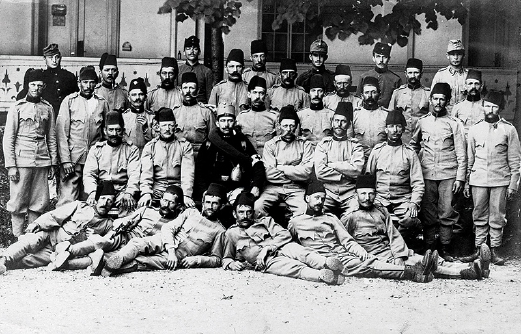
The Austria-Hungary Administration of 1878 and the annexation of Bosnia and Herzegovina in 1908 created a special situation in Austria. As a result, it became necessary to adopt and adapt to the Islamic religion as the majority of the population were Muslims. When the Bosnian Muslims undertook military service, Austria took their needs into consideration. Fridays were declared days off and the Bosnian Muslims were supplied with halal food. They were allowed to pray and to use the fez as a headgear. Military imams and muftis were appointed for spiritual guidance of the troops. Indeed, Islamic sections were set up in cemeteries in Vienna.
4. Islam Law 1912
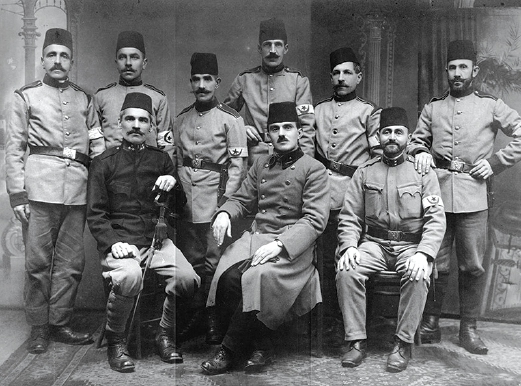
By early 20th century, Austria faced the challenge of legally codifying some of the Muslim practices into its laws. The Islamic society (Dschemat) was divided into different administrative units (Dschamija) which presided over a total of eight “muftiaties” and a chief scholar (Reis-ul-Ulema). By 1912, there was a law in place called “The 1912 Austrian Islam Law”. This law guaranteed the equal treatment of Muslims and Islam within and Austrian System.
5. THE BUILDING IN DOBLING STYLED LIKE A MOSQUE
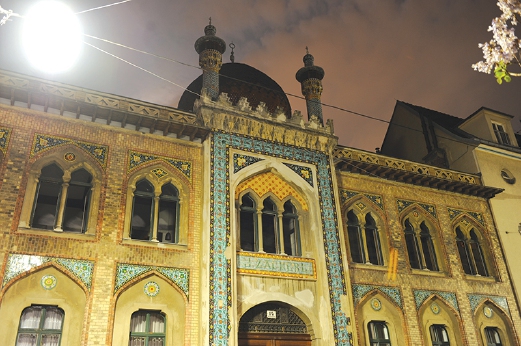
In the town of Dobling, there’s a magnificent, domed building with two minarets in the style of a mosque. It’s the Zacherl factory which produces the inexpensive and effective insect repellent called Zacherlin. The owner was Johann Evangelist Zacherl. It was said that his father, also Johann Zacherl (1814-1888), travelled to Tbilisi where he discovered that the leaves of the pyrethrum were a highly effective insecticide and brought them to Austria. The design created was referred to as “orientalising” a building to give it an exotic flair.
6. TURKISH TREES
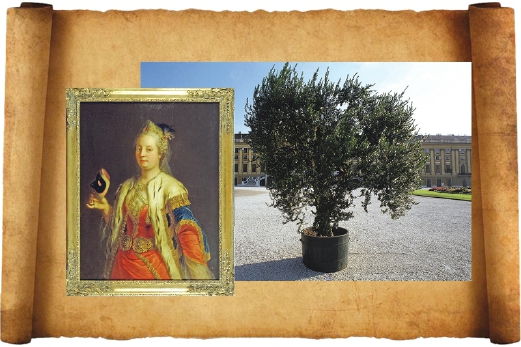
Maria Theresa Walburga Amalia Christina (1717 - 1780) was the only female ruler of the Habsburg dominions and the last of the House of Habsburg. She was also the mother of the infamous Queen of France, Marie Antoinette. To celebrate Maria Theresa’s marriage to Francis I, the Ottoman Sultan Mahmud 1 made a gift of a myrtle tree. The tree, planted in Vienna, is a symbol of love beyond death.
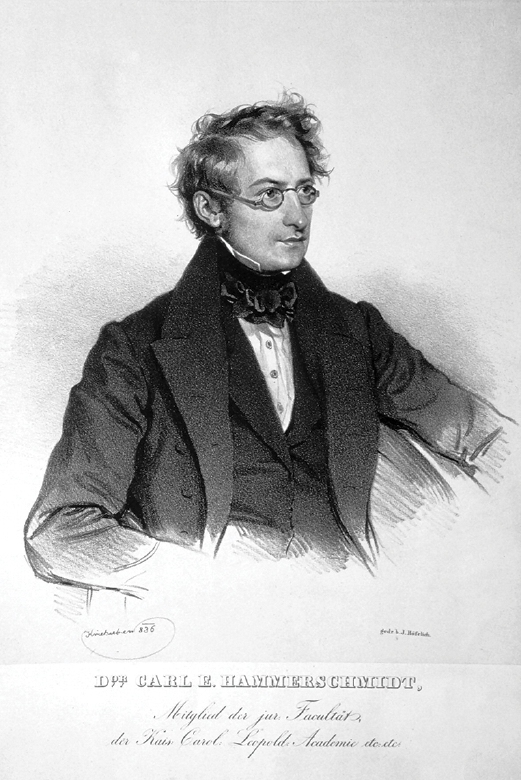
The co-founder of the Red Crescent Society, Dr Karl Eduard Hammerschmidt was one of the pioneers of ether anaesthesia. He was forced to flee to the Ottoman Empire during the 1848 revolution, where he embraced Islam. Known as Dr Abdullah Bey by the Ottomans, he worked as a professor at the medical faculty in Istanbul.

Muhammad Asad was a journalist, traveller, writer, linguist, thinker, political theorist, diplomat and Islamic scholar in the 20th century. He was born into a Jewish family and given the name Leopold Weiss. He embraced Islam in 1926 and later became the co-founder of the state of Pakistan. In 2008, the entrance square to the UN Office in Vienna was named Muhammad Asad Platz to commemorate him.
Source : New Straits Times - Plush Art
Date : 4 December 2016
Written by : Aneeta Sundararaj
KESAN SEJARAH
Perkaitan antara Islam dan Austria telah bermula sejak seribu tahun lalu
Apa yang timbul dalam fikiran kita apabila disebut nama negara "Austria". Adakah timbul watak Julie Andrews sebagai biarawati yang sedang menyanyi lagu "The hills are alive? dalam filem bertajuk Sound of Music?
Terdapat fakta yang tidak diketahui mengenai Austria, kata kurator junior di Muzium Kesenian Islam (IAM), Siti Marina Mohd Maidin iaitu Bagaimana Islam telah mencorak lanskap kebudayaan, tradisi dan seni bina. Subjek ini didokumentasikan dalam pameran sejarah yang sedang diadakan dengan tajuk OstarrichIslam : Islam In Austria.
Pameran ini berdasarkan pada sebuah buku Jerman, Ostarrichislam: Fragments Of 800 Years Of Shared History diterbitkan oleh Al Hamra dan diedit oleh Amena Shakir, Gernot Galib Stanfel dan Martin M. Weinberger
Siti Marina yang fasih berbahasa Jerman mentafsirkan buku ini dan menerangkan kepentingan beberapa bahan pameran.
1. PAKAIAN MAHARAJA

Pakaian ini ialah pakaian perapian pertabalan yang berusia kira-kira 1,000 tahun. Pakaian ini diwarisi oleh maharaja Empayar Roman di German Nation, Harburgs dan keluarga diraja Jerusalem yang hanya pada nama sahaja. Diperbuat daripada sutera Byzantine, ia menggambarkan pokok palma kurma dan kejayaan seekor singa mengalahkan seekor unta. Symbol ini berasal dari era kebudayaan Arab-Parsi yang menggambarkan kuasa pemerintah. Puji-pujian untuk maharaja tersebut ditulis dalam bahasa Arab boleh dibaca dalam tulisan Kufic diakhiri dengan kalendar Islam tahun 528 hijrah (1133 AD).
2. LAMBANG BULAN SABIT DI GEREJA ST STEPHEN'S

Gereja St Stephen ialah salah satu bangunan yang terkenal di Vienna. Bangunan ini dibina daripada runtuhan dua buah gereja. Ketika berlaku peperangan Uthman, simbol cahaya bulan dapat dilihat pada menara Gereja. Simbol itu menunjukkan bulan sabit dan bintang yang bermaksud dunia (imperial) dan agama (kedudukan) kuasa. Simbol bulan sabit ini turut digunakan oleh tentera Uthman dan ia dialihkan setelah Perang Vienna yang berlaku pada tahun 1683 berakhir dan digantikan dengan lambang burung helang di kedua-dua belah yang terletak di atas salib hawariun lambang kuasa di kedua-dua bahagian.
3. BOSNIA DI AUSTRIA

The Austria-Hungary Administration of 1878 dan Bosnia dan Herzegovina dibentuk pada tahun 1908. Hasilnya, agama Islam terpaksa diangkat menjadi agama negara ini kerana majoriti penduduknya beragama Islam. Apabila kaum Muslim Bosnia mengambil bahagian dalam perkhidmatan ketenteraan, Austria tidak mengabaikan keperluan mereka. Hari Jumaat dijadikan hari cuti dan tentera Islam Bosnia diberikan makanan halal. Mereka turut dibenarkan solat dan menggunakan tarbus sebagai topi. Imam tentera dan mufti dilantik untuk membimbing tentera dan disediakan tempat perkuburan bagi orang Islam di Vienna.
4. UNDANG-UNDANG ISLAM PADA TAHUN 1912

Pada awal kurun ke-20, Austria menghadapi cabaran untuk menerima beberapa amalan orang Islam ke dalam perundangan negara mereka. Persatuan Islam (Dschemat) dibahagikan kepada untuk pentadbiran yang berbeza (Dschamija) yang ditugaskan mengetuai lapan mufti dan ketua sarjana (Reis-ul-Ulema). Pada tahun 1912, terdapat satu undang-undang yang dinamakan "Undang-Undang Islam Austria 1912". Undang-undang ini memberikan jaminan kesama rataan terhadap orang Islam dan Sistem Austria.
5. REKA BENTUK BANGUNAN DI DOBLING SEPERTI SEBUAH MASJID

Di bandar Dobling, terdapat sebuah bangunan yang amat indah lengkap dengan two buah menara seperti yang boleh dilihat di masjid. Bangunan itu ialah kilang Zacherl yang menghasilkan racun serangga yang murah serta efektif yang dinamakan Zacherlin. Pemiliknya bernama Johann Evangelist Zacherl. Dikatakan ayahnya yang juga bernama Johann Zacherl (1814 - 1888) telah mengembara ke Tbilisi dan menemukan daun pyrethrum yang amat mujarab digunakan sebagai racun serangga dan membawa pulang ke Austria. Reka bentuk ini dirujuk sebagai bangunan yang mempunyai "unsur ketimuran" menyerlahkan bakat eksotik.

Maria Theresa Walburga Amalia Christina (1717-1780) merupakan satu-satunya pemerintah wanita Habsburg dan pemerintah terakhir Rumah Habsburg. Baginda juga ialah ibu Permaisuri Perancis yang terkenal, Marie Antoinette. Bagi meraikan perkahwinan Maria Theresa I, Sultan Mahmud 1 Uthmaniah menghadiahkan pohon mirtel. Pohon ini ditanam di Vienna menjadi simbol kasih sayang melebihi kematian.

Pengasas bersama Persatuan Salib Merah, Dr Karl Eduard Hammerschmidt ialah salah seorang pengasas eter anestesia. Beliau terpaksa melarikan diri ke Empayar Othmaniah ketika revolusi 1848. Di sinilah beliau memeluk Islam dan dikenali sebagai Dr Abdullah Bey di empayar Ottomaniah. Beliau bekerja sebagai professor di fakulti perubatan di Istanbul.

Muhammad Asad ialah wartawan, pengembara, penulis, ahli linguistik, pemikir, ahli teori politik, diplomat dan sarjana Islam pada kurun ke-20. Beliau dilahirkan dalam keluarga Yahudi dan diberi nama Leopold Weiss. Beliau memeluk Islam dan bersama membantu membentuk negara Pakistan. Pada tahun 2008, pintu masuk dataran ke Pejabat PBB di Vienna dinamakan Muhammad Asad Platz bagi memperingati beliau.
Diterjemah oleh : Teratai Melur
E-mel: terataigenius@gmail.com
""Untuk khimat terjemah, sila e-mel butiran ke alamat e-mel tertera di atas. Terima kasih
Comments
Post a Comment